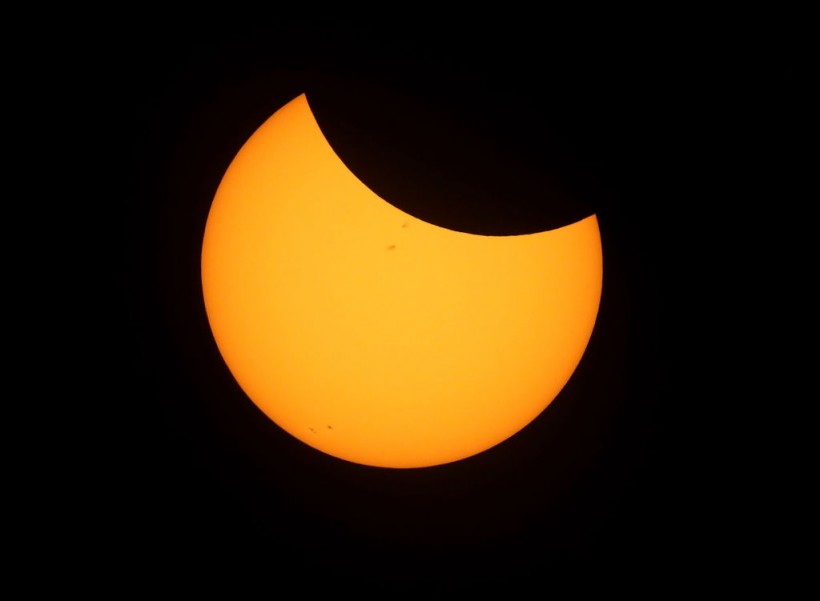You might be able to use your eclipse glasses six days before Halloween if you have a set.
NPR explained that a solar eclipse occurs when the moon moves in front of the sun and briefly obstructs its light.
Because the moon and sun are not exactly lined up during a partial solar eclipse, the sun will not be entirely hidden. Instead, the sun will seem to be shaped like a crescent.
How, When Can You Catch the Last Solar Eclipse of 2022
On October 25, just a few days before Halloween, the moon will pass in front of the sun, resulting in a partial solar eclipse. The sun will appear to have a sizable bite taken out of it depending on where spectators are located worldwide.
The partial eclipse, which will be closest to the north pole and Russia, will be visible from Africa, Asia, Europe, and Guernsey in the United Kingdom.
On October 25, spectators from the US won't be able to see this partial solar eclipse, though.
Additionally, one report indicated that this month would see the final solar eclipse of 2022.
The moon's shadow will cover approximately 82 percent of the sun's disc during the eclipse's center point, which will happen between 5:00 and 9:00 a.m. EDT.
According to reports, up to 80 percent of the sun will be obscured from Russia, and this proportion drops to 70 percent in China, 63 percent in Norway, and 62 percent in Finland.
It is important to note that there will be no total solar eclipse anywhere on Earth during this occurrence. This is due to an uneven alignment between the moon and the sun, preventing the moon from completely obstructing the sun on October 25 during the eclipse.
Instead, it will seem like a crescent-shaped bite has been taken out of the sun, just like the photo below.

A partial eclipse is seen from South Mike Sedar Park on August 21, 2017, in Casper, Wyoming.
ALSO READ: NASA Videos on Mars Show What Solar Eclipse Looks Like on the Red Planet
About Solar Eclipse
Eclipses happen when the moon passes in front of the Earth and the sun, covering part of the globe with a shadow and partially or completely blocking the sun's light.
Solar eclipses are never visible across the entire world because the moon is considerably smaller than the Earth and casts a much narrower shadow, according to Space.com.
Any eclipse is strongest where an imaginary line connecting the sun and moon's centers meets the planet's surface on Earth. Observers may see the moon precisely centered in the sun's center from this point.
The moon's shadow travels across the globe at a pace of between 1,000 and 5,000 miles per hour as it continues on its orbit, carrying the point of the central eclipse with it.
During a complete eclipse, the center of the eclipse moves over the planet's surface from west to east. According to Space.com, during a partial eclipse like the one that will take place at the end of October, this point either touches the north or south poles rather than the surface of the Earth.
This explains why just a fraction of the moon's shadow hits Earth, exposing the sun partially.
RELATED ARTICLE: NASA Captures Solar Eclipse Visible Only on Solar Dynamics Observatory From Space
Check out more news and information on Space in Science Times.














